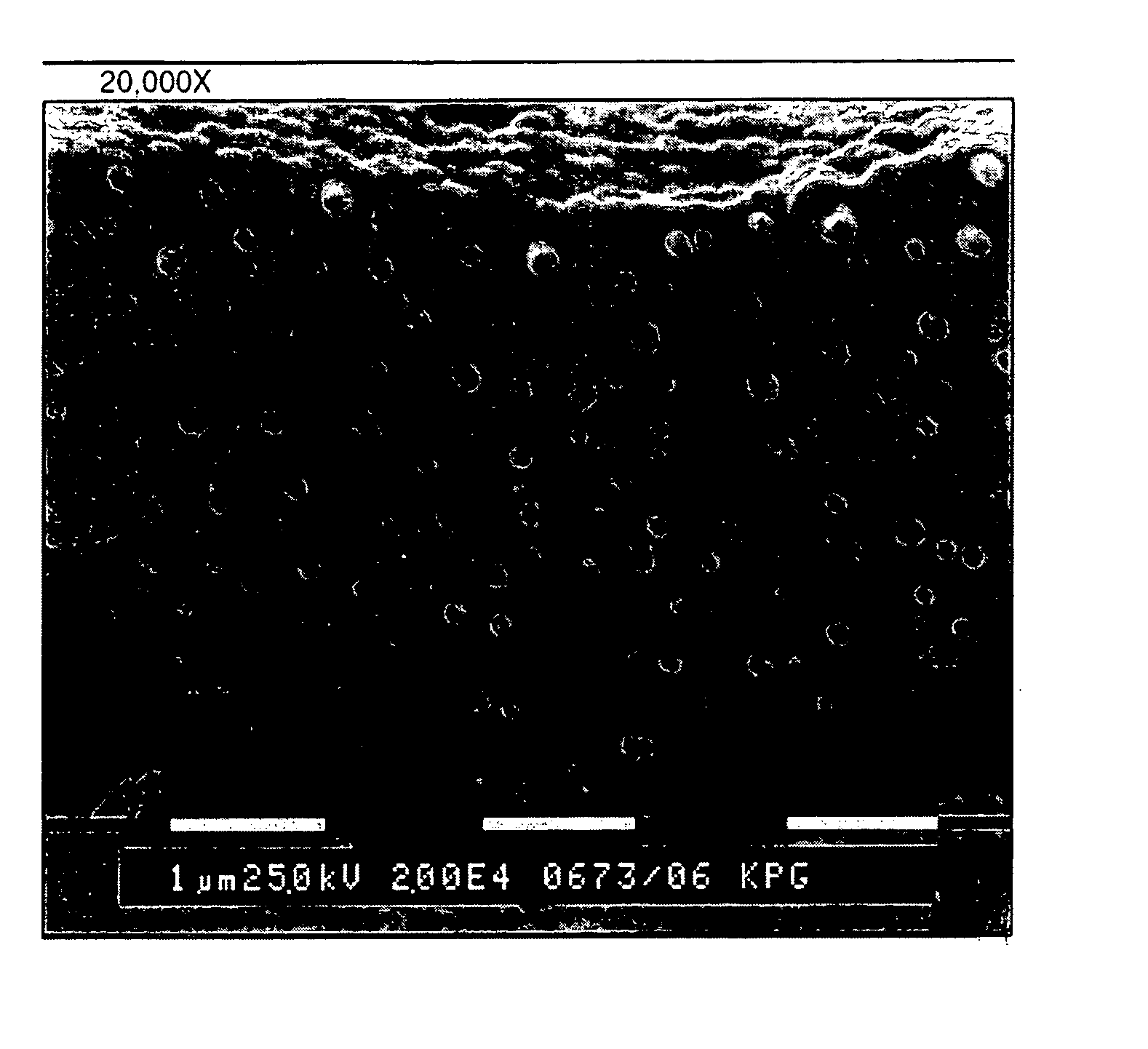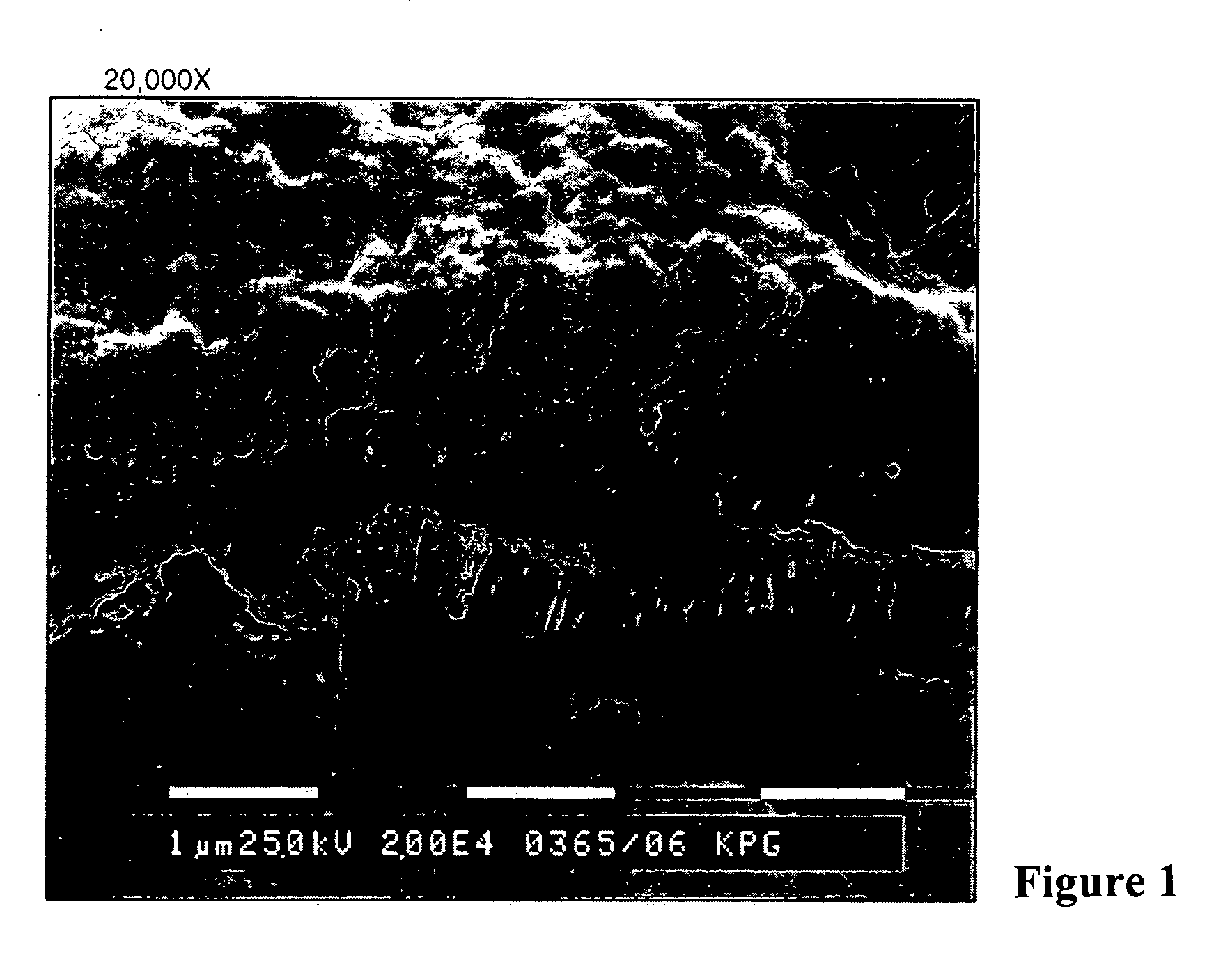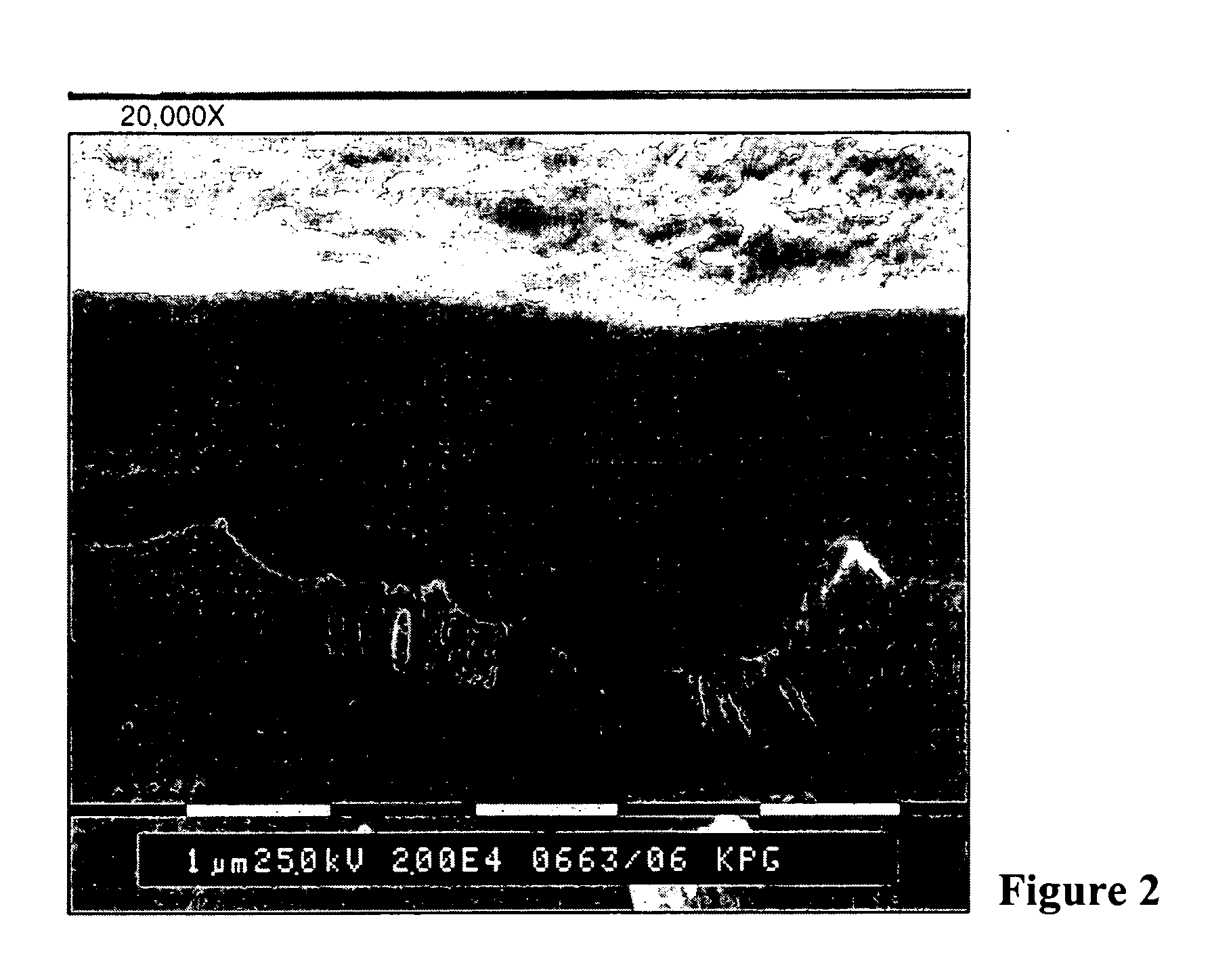Printing plates using binder resins having polyethylene oxide segments
a printing plate and polyethylene oxide technology, applied in thermography, instruments, photosensitive materials, etc., can solve the problems of insufficient differentiation, inability to develop the unexposed area, and inability to provide sufficient differentiation, so as to avoid a separate development step
- Summary
- Abstract
- Description
- Claims
- Application Information
AI Technical Summary
Benefits of technology
Problems solved by technology
Method used
Image
Examples
example 1
Synthesis of Macromer 1
[0110]
[0111] Toluene (266 g) was charged into a 500-mL flask, followed by the addition of poly (ethyleneglycol monomethyl ether) (80 g) (Mn 2000) and methacryloyl chloride (4.2 g) in a N2 atmosphere. Subsequently, triethylamine (4.52 g) was added over a period of 20 minutes, while maintaining the reaction temperature at 30° C. After an additional 2 hr, the temperature of the reaction mixture was raised to 50° C. and kept at that temperature for an additional 2 hr. Subsequently, the reaction mixture was cooled to room temperature and filtered to remove the triethylamine hydrochloride salt, which was obtained in the theoretical amount. Petroleum ether was added to the filtrate to precipitate Macromer 1, which was collected by filtration and dried in vacuum oven at room temperature. The reaction is shown in the scheme above. Preferably, the average value of n is about 45.
example 2
Synthesis of Graft Copolymer 1
[0112] Macromer 1 (7.5 g), water (48 g) and 1-propanol (192 g) were charged into a 500-mL flask, which was heated to 80° C. Styrene (66.9 g) and azo bis-isobutyronitrile (0.48 g) (VAZO-64, from DuPont de Nemours Co) were mixed in a separate beaker and part of this solution (12 g) was added to the macromer solution, which became hazy within about 10 minutes. Subsequently, the remaining solution was added over a 30-min period. After 3 additional hours, the conversion to Graft Copolymer 1 was about 97% based on determination of percent non-volatiles. The weight ratio of styrene: Macromer 1 was about 90:10 in graft copolymer 1.
example 3
Preparation of On-Press Developable Printing Plate
[0113] On a brush-grained and phosphoric acid anodized aluminum substrate that has been subbed by polyacrylic acid, the solution described in Table 1 was applied to give a dry coating weight of 2 g / m2.
TABLE 1Composition of Example 3 (formulations in parts by weight)Parts byComponentWeight PercentReaction product of3.74DESMODUR ® N100 withhydroxyethyl acrylate andpentaerythritol triacrylateGraft copolymer 13.53SARTOMER 35510.782-(4-methoxyphenyl)-4,6-0.42bis(trichloromethyl)-2-triazineAnilino-N,N-diacetic acid0.23IR dye20.09BYK 30730.02n-Propanol72.95Water18.24
1SARTOMER 355 is a multifunctional acrylic monomer available from SARTOMER Co., Inc.
2The IR dye is 2-[2-[2-phenylthio-3-[(1,3-dihydro-1,3,3-trimethyl-2H-indol-2-ylidene) ethylidene]-1-cyclohexen-1-yl]ethenyl]-1,3,3-trimethyl-3H-indolium chloride.
3BYK 307 is a modified polysiloxane available from Byk Chemie.
[0114] The resulting coating was then over-coated with a solution o...
PUM
| Property | Measurement | Unit |
|---|---|---|
| weight percent | aaaaa | aaaaa |
| weight percent | aaaaa | aaaaa |
| wave-length | aaaaa | aaaaa |
Abstract
Description
Claims
Application Information
 Login to View More
Login to View More - R&D
- Intellectual Property
- Life Sciences
- Materials
- Tech Scout
- Unparalleled Data Quality
- Higher Quality Content
- 60% Fewer Hallucinations
Browse by: Latest US Patents, China's latest patents, Technical Efficacy Thesaurus, Application Domain, Technology Topic, Popular Technical Reports.
© 2025 PatSnap. All rights reserved.Legal|Privacy policy|Modern Slavery Act Transparency Statement|Sitemap|About US| Contact US: help@patsnap.com



